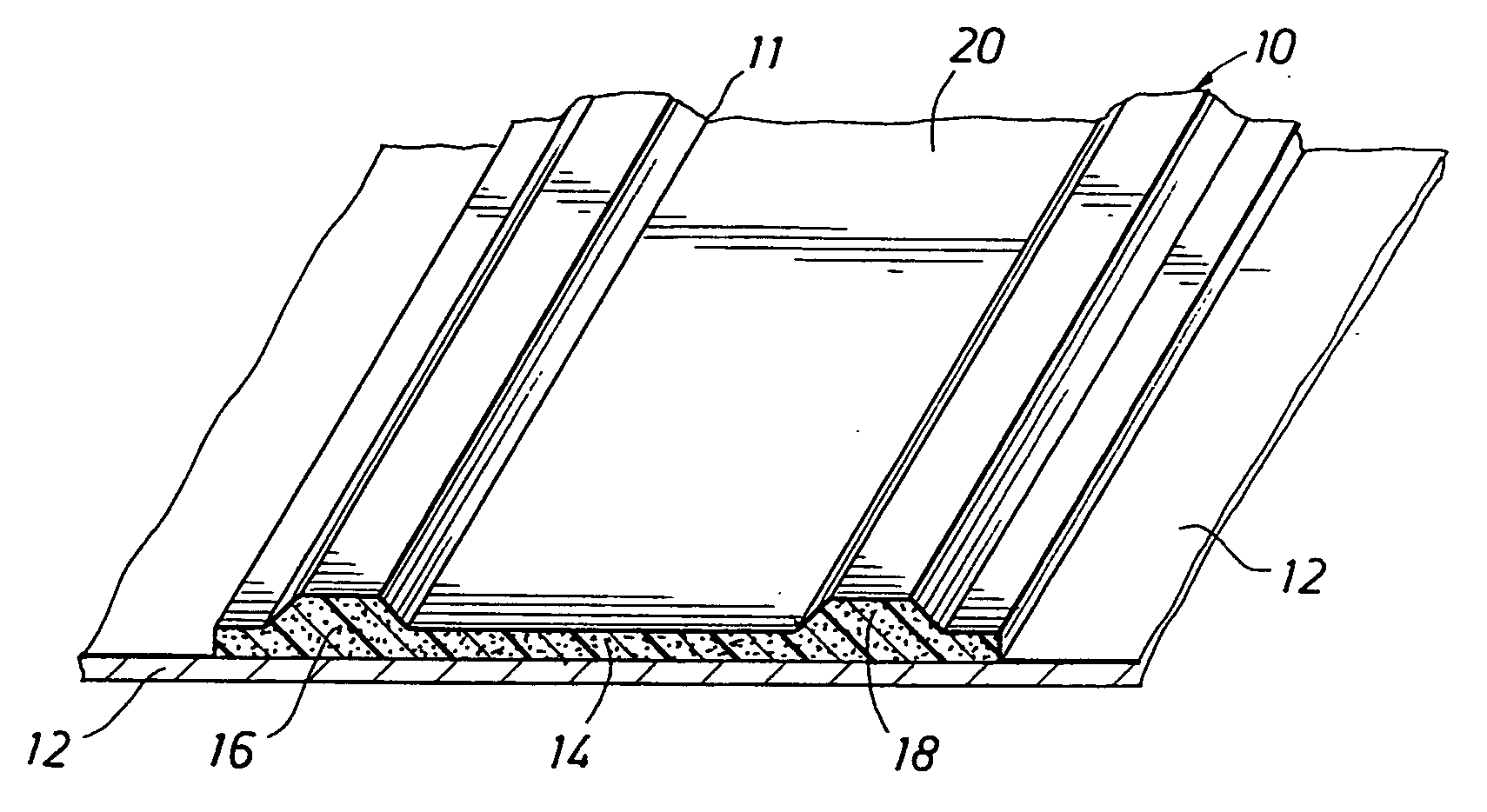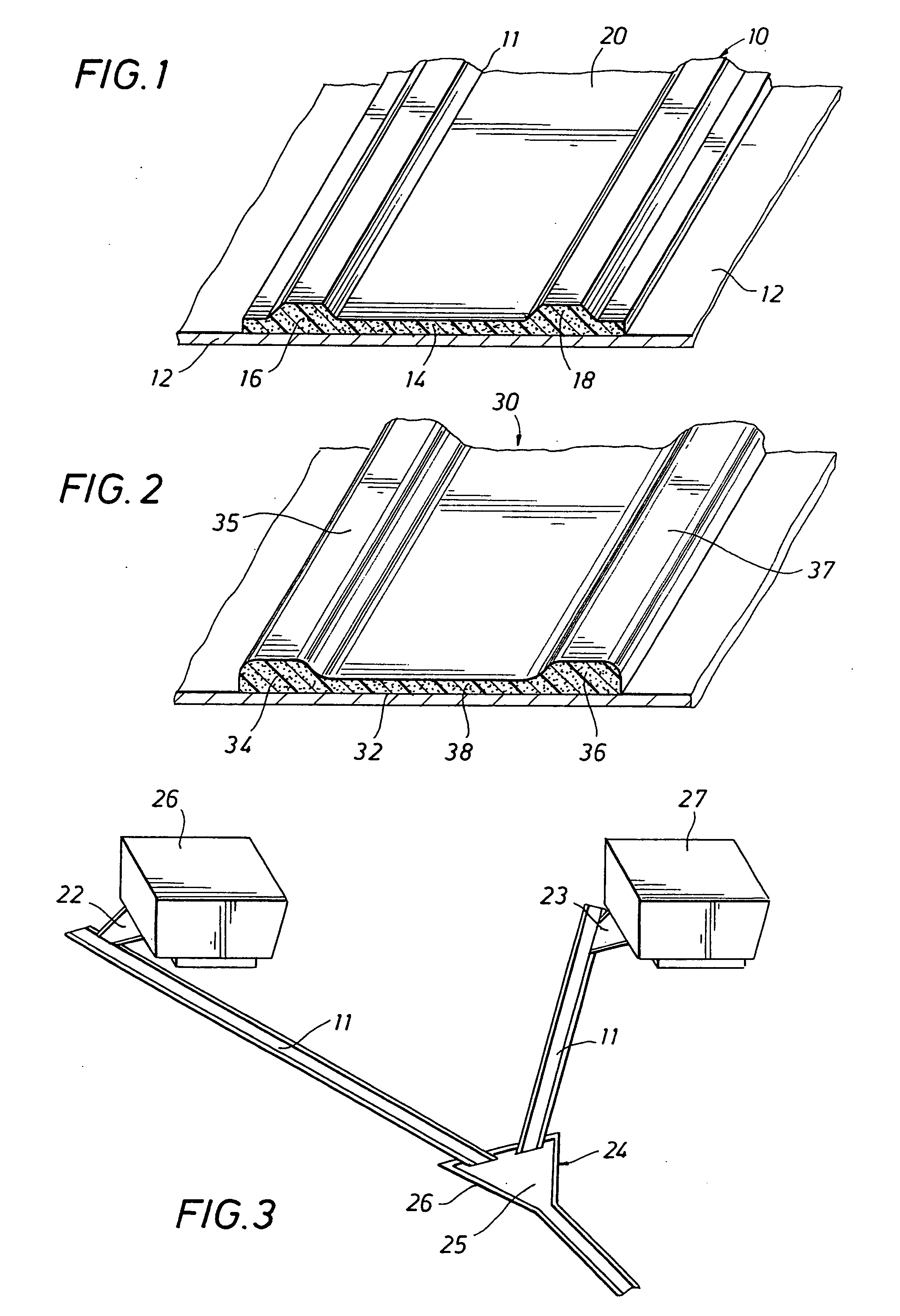Air conditioning condensation drainage system
a drainage system and air conditioner technology, applied in snow traps, lighting and heating apparatus, heating types, etc., can solve the problems of oxidizing the roof membrane, affecting the performance of the roof membrane, and increasing the detrimental effect of the roofing membrane, so as to effectively prepare the roof membrane. the effect of the drainage channel material and the effect of reducing the amount of drain channel material
- Summary
- Abstract
- Description
- Claims
- Application Information
AI Technical Summary
Benefits of technology
Problems solved by technology
Method used
Image
Examples
Embodiment Construction
[0042] Referring now to the drawings and first to FIG. 1, an air-conditioning condensate drainage system constructed in accordance with the principles of the present invention and representing the preferred embodiment is shown generally at 10 and is shown in the figure as a partial strip of condensate drain structure which is shown to be mounted in any suitable fashion onto the roofing membrane 12 of a building roofing system. The air-conditioning condensate drainage system 10 comprises an isolation membrane 14 which is typically in the form of an elongate strip of material that is compatible with the membrane material of the roofing membrane 12. Preferably, the isolation membrane will be a component of an integral construction composed of a polymer material such as polyvinyl chloride (PVC) which may be layered with other suitable materials and may be reinforced by a suitable fabric to enhance the structural integrity thereof. The integral condensate drainage strip material 11 may b...
PUM
 Login to View More
Login to View More Abstract
Description
Claims
Application Information
 Login to View More
Login to View More - R&D
- Intellectual Property
- Life Sciences
- Materials
- Tech Scout
- Unparalleled Data Quality
- Higher Quality Content
- 60% Fewer Hallucinations
Browse by: Latest US Patents, China's latest patents, Technical Efficacy Thesaurus, Application Domain, Technology Topic, Popular Technical Reports.
© 2025 PatSnap. All rights reserved.Legal|Privacy policy|Modern Slavery Act Transparency Statement|Sitemap|About US| Contact US: help@patsnap.com



